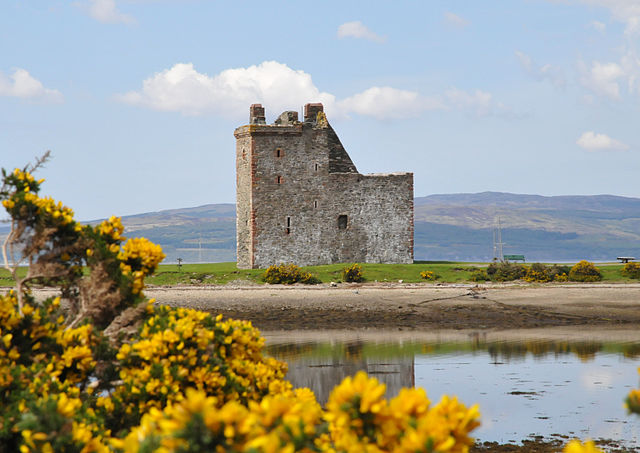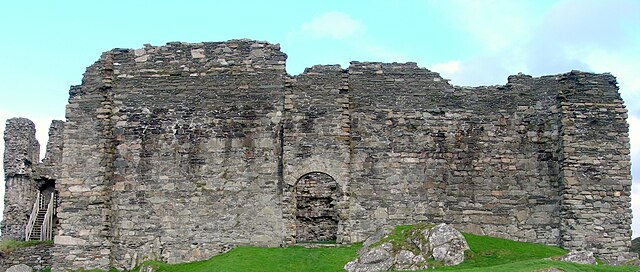Dubhghall mac Suibhne was a Scottish landholder in Argyll, and a leading member of Clann Suibhne. He was a son of Suibhne mac Duinn Shléibhe, and appears to have held lordship of Knapdale from at least the 1240s to the 1260s, and may have initiated the construction of Skipness Castle and Lochranza Castle.
Now-ruinous Skipness Castle may have been constructed by Dubhghall. From this site, the castle's occupants would have had a clear view across the Kilbrannan Sound to Arran. The castle is first attested in 1261 by a charter which describes Dubhghall as its lord.
Now-ruinous Lochranza Castle may have been built by Dubhghall. The visible tower house is what remains of a late mediaeval redevelopment of a thirteenth-century hall house.
Ruinous Castle Sween, one of Scotland's oldest standing stone castles, seems to have been built by Dubhghall's father, eponym of both Clann Suibhne and the castle itself.
Coat of arms of Alexander II as it appears on folio 146v of British Library Royal 14 C VII (Historia Anglorum). The inverted shield represents the king's death in 1249.
Clan Sweeney is an Irish clan of Scottish origin. The Mac Suibhne family did not permanently settle in Ireland before the beginning of the 14th century, when they became Gallowglass soldiers for the Ua Domnaill dynasty of Tír Chonaill. The clan also claims an Irish descent from a prince of the Uí Néill dynasty, Ánrothán Ua Néill, son of Áed, son of Flaithbertach Ua Néill, King of Ailech and Cenél nEógain, died 1036. Through this descent the clan can claim a descent from Niall Noigíallach.
Castle Sween, thought to have been built by Suibne, son of Dunslebh, son of Aodh of Buirche (Hugh the Splendid), son of Ánrothán.
A plate from The Image of Irelande, by John Derricke, published in 1581. The chief sitting at his table, entertained by his bard and harper is thought to be a "Mac Sweyne".[citation needed]
Castle Doe, Barmkin and Keep.







